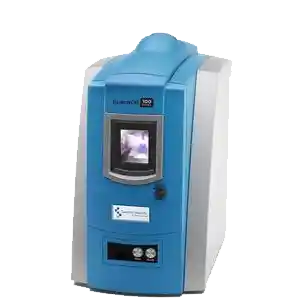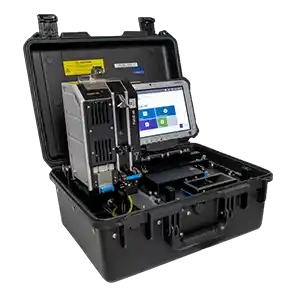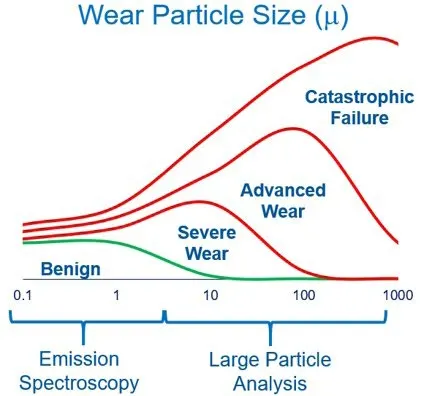AMETEK Spectro
Scientific’s on-site oil
analysis tools have enabled
Honda Performance
Development to support
WTR Andretti and Meyer
Shanks ARX-06 race cars
to the podium.
Introduction
Honda Performance Development (HPD) faced a formidable
challenge during the Rolex 24-hour endurance race in
January 2023.
Their most advanced ARX-06 GTP (Grand Touring Prototype)
race cars, which would be racing competitively for the first time
with new engine hybrid technology, and a new IMSA-approved
renewable fuel.
Given the multitude of variables, HPD anticipated the emergence
of new wear trends attributable to the hybrid design. Employing
onsite oil analysis of both engine oil and transmission fluids
stands as one of the numerous methods for predicting failures.
HPD deployed its trackside oil analysis lab and support team to
Daytona, providing consistent onsite testing and analysis for WTR
Racing and Meyer Shank Racing cars throughout the 24-hour race.
This case study explores how HPD effectively managed and
resolved these challenges, showcasing their engineering prowess
and commitment to performance excellence.
Background
Mating a 671hp (500kW) 2.4L twin turbocharged V6 engine to
a Bosch hybrid battery drive and new transmission meant that
engine and gearbox wear needed to be constantly monitored
throughout the race.
A new racing fuel with a high ethanol content can also lead to
unexpected issues, primarily excessive fuel dilution, which, if left
unchecked, would result in viscosity loss, leading to premature
cylinder and crankcase wear. With engines pushed to the redline
during the race, accelerated failure due to wear can occur in
minutes. Replacing engines midway through the race, if required,
jeopardises the driver and team standings. Onsite oil analysis
tools provide the extra data for the trackside engineers to compile
into their Race plan.
The first sign of trouble emerged during the practice sessions,
when HPD’s technical team noticed irregularities in fuel analysis
and abnormal engine wear patterns. Upon further investigation,
it was revealed that the race cars were experiencing
higher-than-normal levels of fuel dilution in the engine oil,
affecting overall performance and reliability.
Onsite oil analysis fortrackside support
- Be robust, avoiding the need for solvents and gases
- Be high performance, accurate and fast
- Detect ferrous and nonferrous wear by element for signs of problems
- Monitor physical parameters as needed to support why wear is occurring


Figure 2. SpectrOil 120C.
Solutions
HPD developed an innovative approach to monitor the extreme conditions of a 24-hour duration race.
A SpectrOil 120C was the choice for trackside support teams because of its consistency, ease of use,
and fast response on a 2 ml sample. Sub-ppm results for wear metals, additives, and contaminants are
uploaded to the engineering race management systems as soon as results are generated, providing
excellent predictive data related to engine performance.
New trackside testing and validation
The next generation solution – FieldLab 58C was also introduced to the trackside.
One of the core features of the device is the capability to measure all the severe (>4 micron) wear
particles by elemental analysis. These wear particles serve as early indicators of abnormalities in
engines and gearboxes.
FieldLab 58C also has the capability to look at the chemistry and viscosity, which is not only a
great indicator for fuel dilution, but also the integrity of the lubricants.

Figure 3. FieldLab 58C.
- Rugged and robust design
- No need of solvents
- Storability
- Onboard diagnostics for actions taken right away
- Abnormal abrasion, adhesion & fatigue wear particles are large, including base metals, not just surface oxides.
- Microspall particles renge between 10 μm and 50 μm.
- Laminar particles and chunks range from 50 μm to several hundreds of microns. Optical emission spectroscopy is blind to large particles.

Figure 4. The new elements module on FieldLab 58C is detects abnormal wear earlier than other oil analysis techniques




